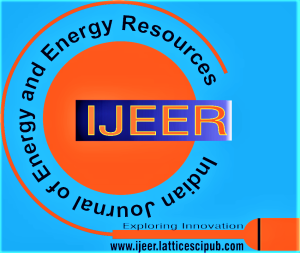A Distributed and Partially Centralised Form of Energy Storage System Model to Reduce Energy Curtailment of Renewable Energy System
C.Rahul Guptha1, Kothuri Ramakrishna2, K. Mahesh3
1C.Rahul Guptha, Research scholar, Department of Electrical and Electronics Engineering, B V Raju Institute of Technology, Narsapur, Telangana, India.
2Kothuri Ramakrishna, Associate Professor, Department of Electrical and Electronics Engineering, B V Raju Institute of Technology, Narsapur, Telangana, India.
3K. Mahesh, Asssitant Professor, Department of Electrical and Electronics Engineering, B V Raju Institute of Technology, Narsapur, Telangana, India.
Manuscript received on 08 October 2021 | Revised Manuscript received on 22 October 2021 | Manuscript Accepted on 15 November 2021 | Manuscript published on 30 November 2021 | PP : 14-18 | Volume-1 Issue-1, November 2021 | Retrieval Number: 100.1/ijeer.A1003121121
Open Access | Ethics and Policies | Cite | Mendeley | Indexing and Abstracting
© The Authors. Published by Lattice Science Publication (LSP). This is an open-access article under the CC-BY-NC-ND license (http://creativecommons.org/licenses/by-nc-nd/4.0/)
Abstract: In today’s scenario, the difference between energy demand and load consumption is increasing at a rapid pace. The rising difference is faster than the development of technology, but the resources required to generate electrical energy are depleting. So, new technologies are being adapted to generate electrical energy i.e., using renewable energy sources. But the drawback of renewable energy sources is that the magnitude of energy output is not controllable compared to conventional energy sources. This uncontrollable nature results in curtailment of energy generated at the non-conventional source side integrated to the existing electrical grid. This curtailment of energy leads to waste of energy and the capital to generate the energy. So a secondary source of energy is required to effectively utilize the energy from renewable energy sources, which is the Energy Storage System (ESS). The ESS is used to store excess energy from renewable energy sources, but the question arises when you have to choose only one type of system which is simple enough to setup and can act as solution to the complex problems. Usually, the form of energy storage system adopted is the Battery Energy Storage System (BESS) even this kind of system has some challenges in integrating with the grid and the renewable energy sources. In this paper, the disadvantages of the energy curtailment, and a model is proposed by addressing the challenges of conventional or concentrated BESS and to overcome them. A simulation of the switching techniques during charging and discharging to show the switching based on SOC of the individual BESS units comparing with the other BESS units.
Keywords: Distributed BESS unit, Centralised data logging, Regional Control Unit (RCU), Central Control Unit (CCU)
